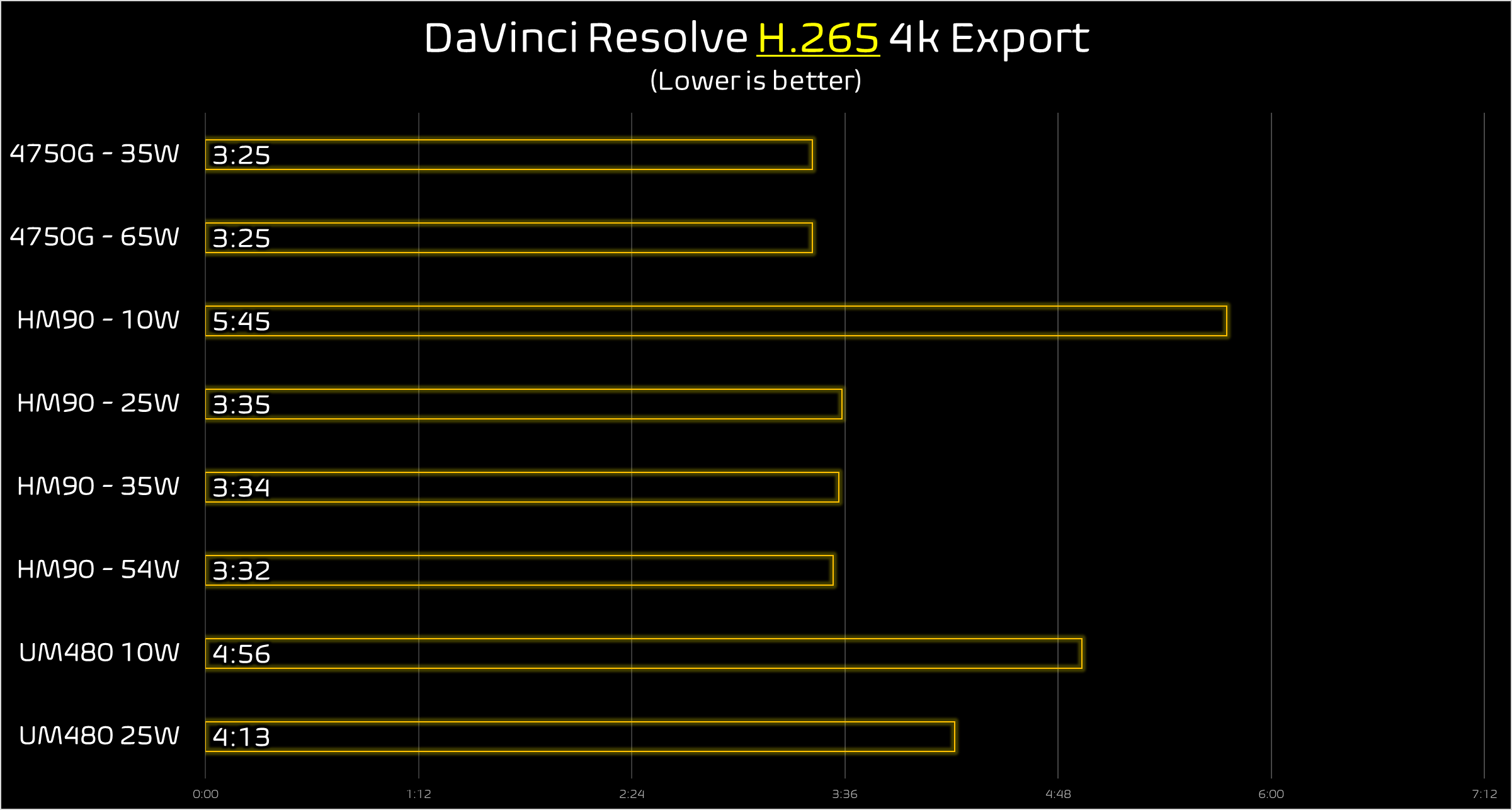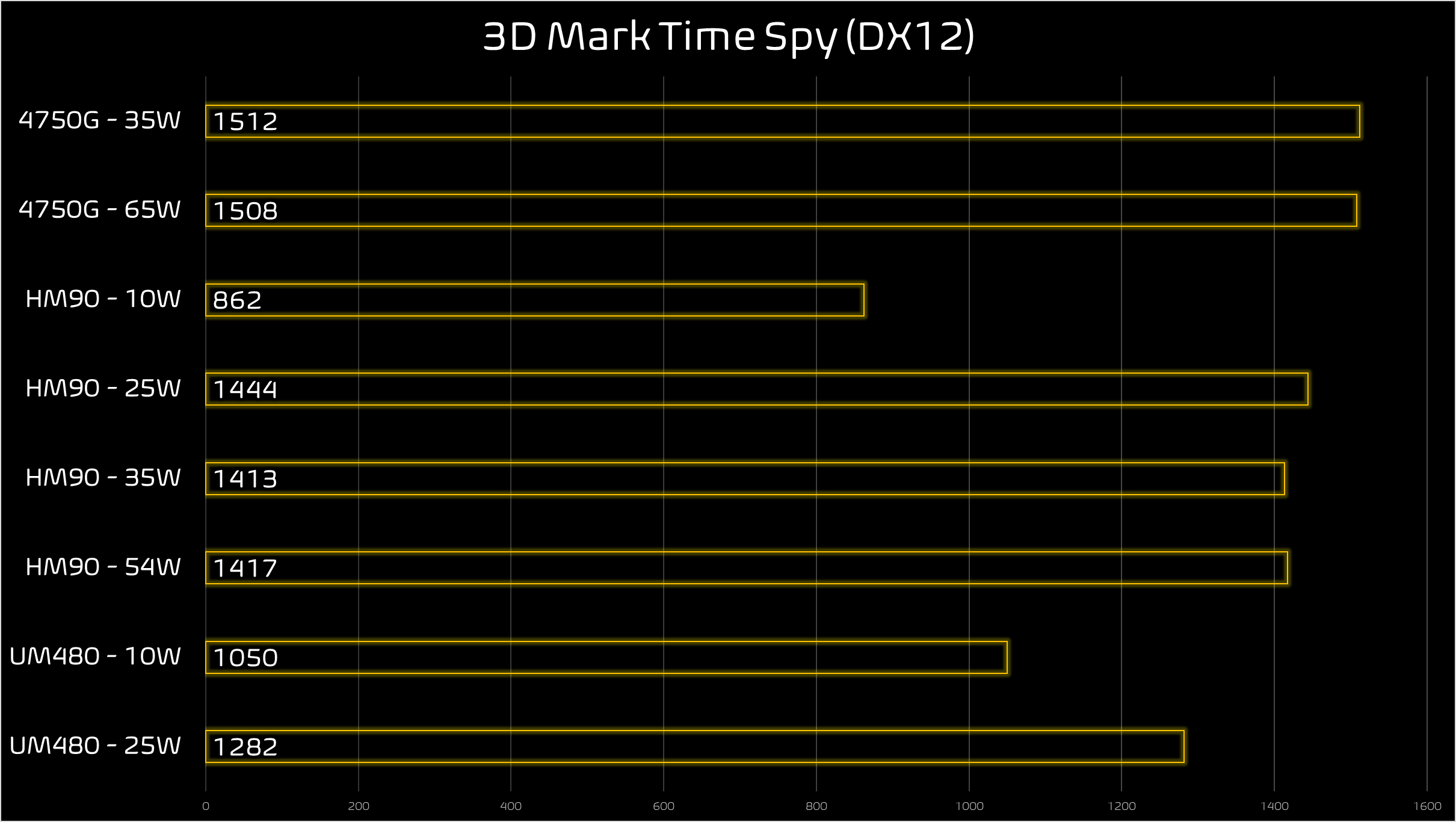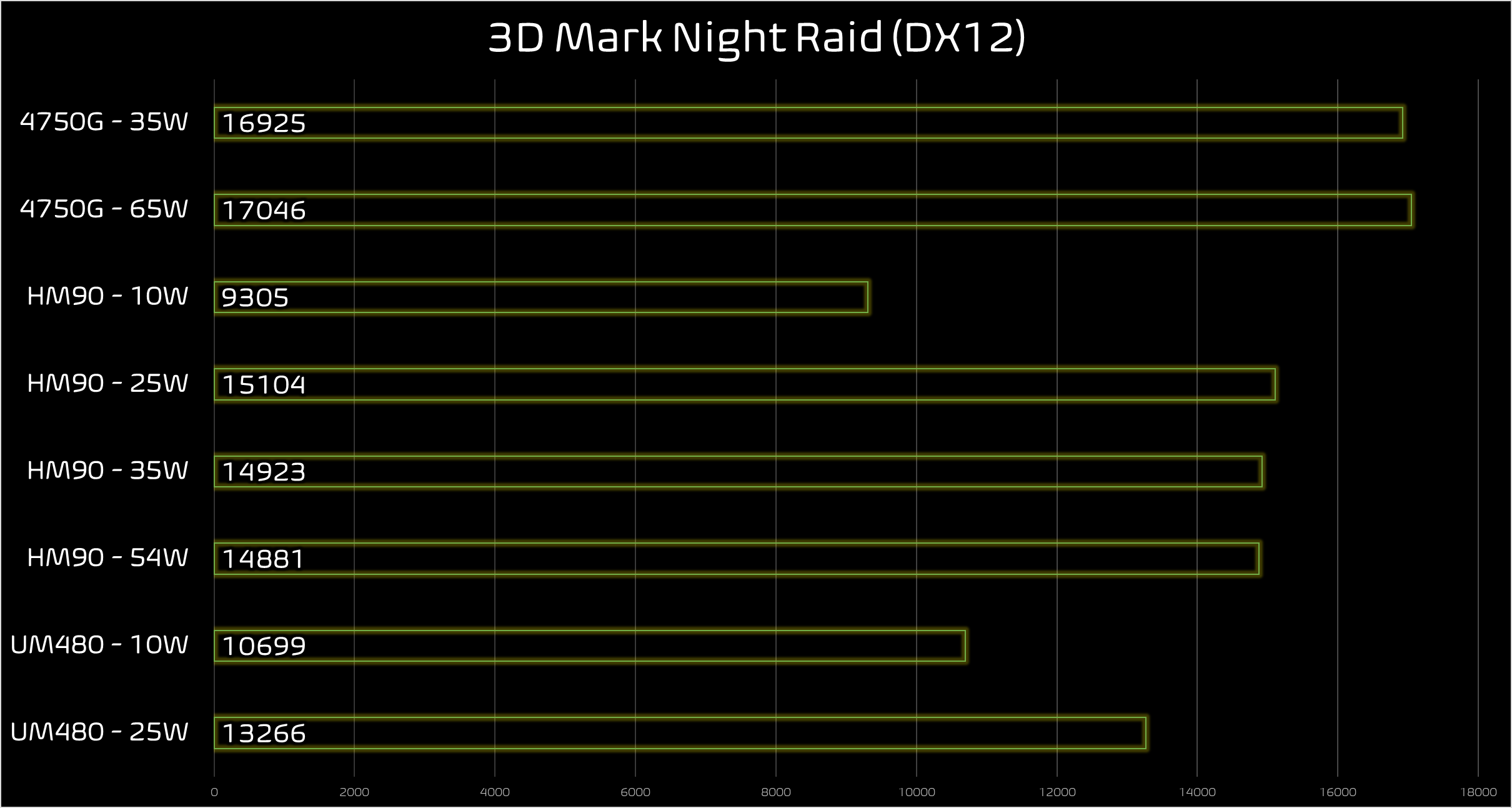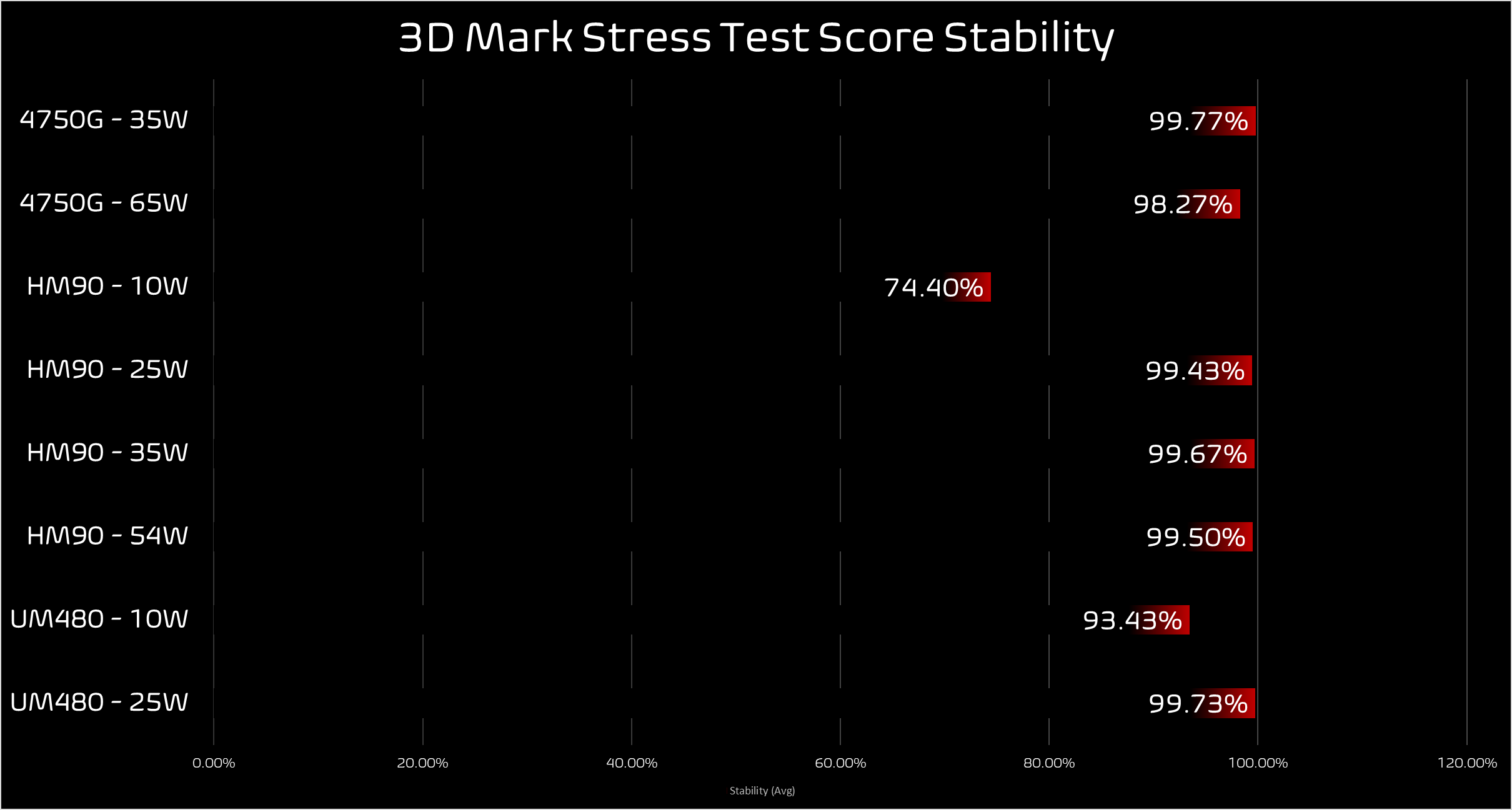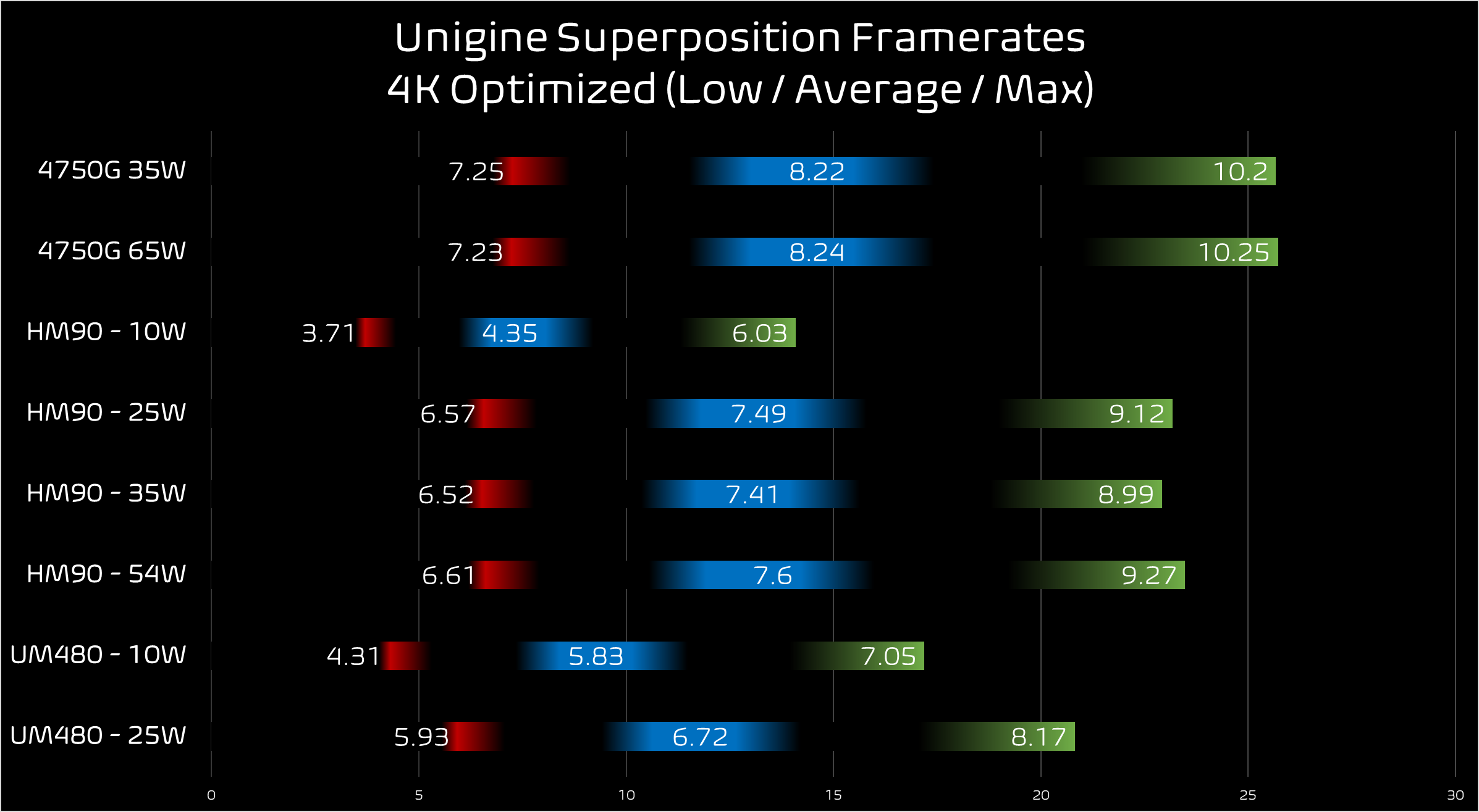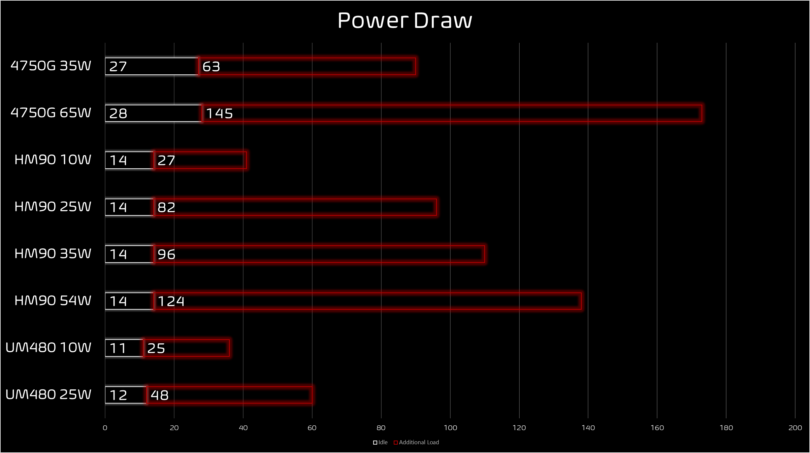Recently we took a look at the HM90 mini PC, today we’re taking a look at a smaller, cheaper, and probably less powerful UM480 from Minisforum. Minisforum released this last fall, but it was overshadowed by bigger news such as the UM690. It shares the same design, but it is built to a much lower budget. Despite this, it might be possible that it matches the HM90 we reviewed earlier, as it does have TDP limits unlocked in BIOS.
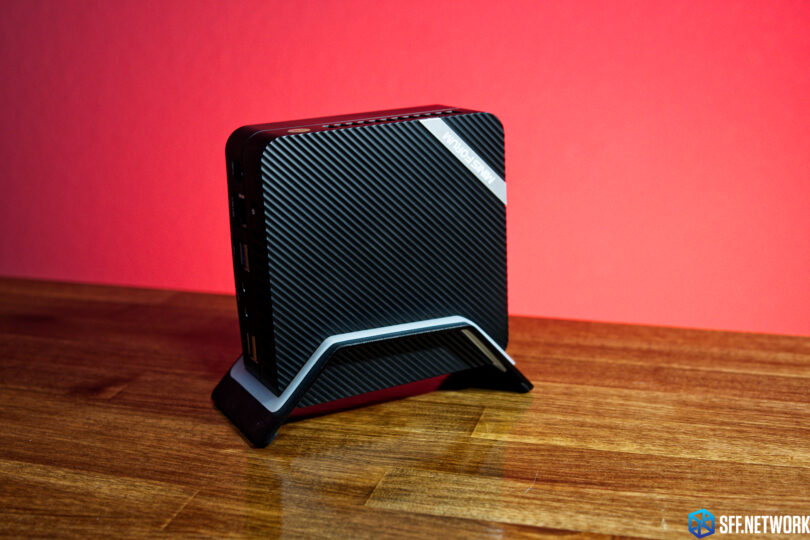
SPECS & PORTS
Like the HM90, the UM480 is using a 4000 series Ryzen mobile processor. The chassis is smaller than the HM90, and as such Minisforum went with a more efficient mobile processor, the R7 4800U. This is designed for 10-25W settings, so we’ll see how it performs compared to the HM90 at those wattages, but also I will crank it up and see what happens at above 25W (hint: it didn’t go well). Similar to the HM90, you can install your own RAM in dual channel configuration, but the system would not boot when my 3200mhz C16 Crucial Ballistix 2×8 kit was set above 2667mhz. Those familiar with Ryzen APU’s will probably already notice, this is a bad omen for GPU performance.
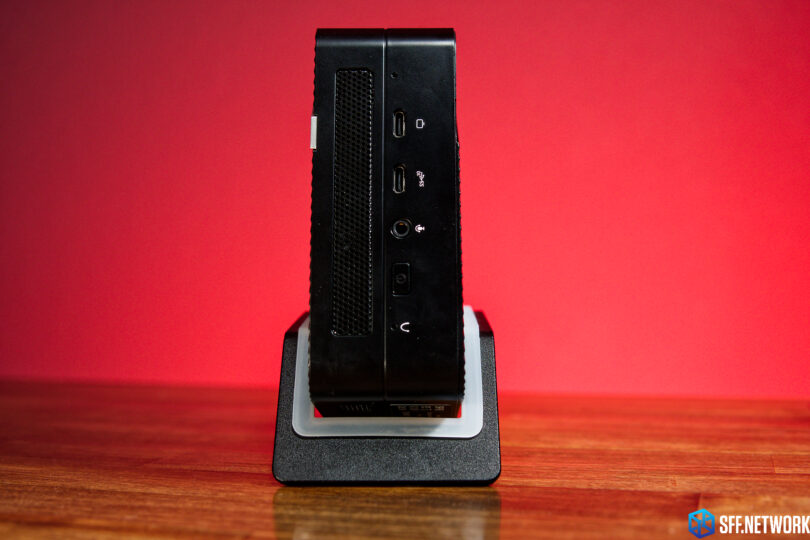
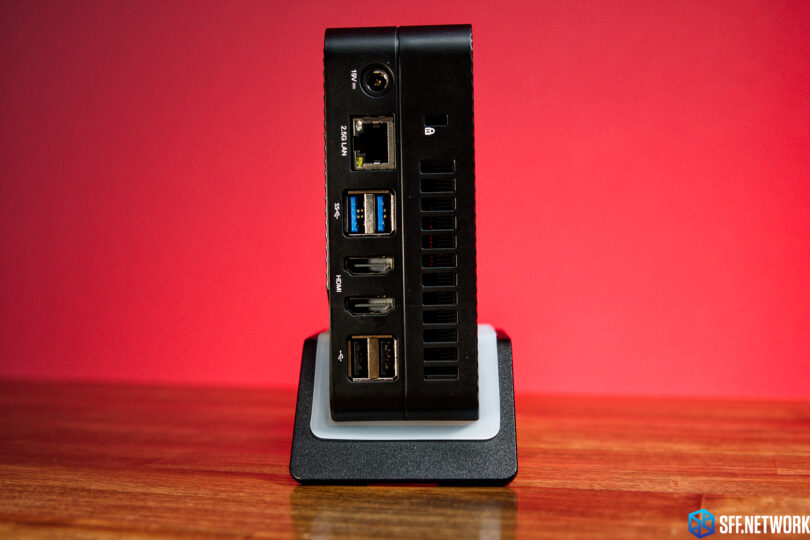
With a smaller chassis we also get less ports, but it’s not all bad news. Up front there are a pair of Type C ports, both USB 3.2 Gen 2 (10gbps), but one is capable of DisplayPort 1.4 at 4k 60hz, while the other is data only. There is also a combo headphone-mic jack up front. In back are a pair of USB 2.0 Type A ports, another pair of USB Type A 3.2 Gen 2 ports followed by a pair of HMDI ports capable of 4k 60hz, a single 2.5gbps Ethernet port, and a 19V barrel plug for power, so no USB-PD power here either. One thing of note, after installing Windows the drivers for the LAN port were not detected or installed (and neither were the wifi drivers) so I had to download on a separate computer and copy via USB in order to connect to a network. It was an inconvenience for me, but for others it could be a show stopper.
TEARDOWN
Taking apart the UM480 is harder than it should be. If you’ve seen reviews of the related UM560 or 580, you’ll find this is a common complaint on this series and sadly it’s no different on the 480. Removing the rubber strips isn’t terribly difficult, but to be honest it shouldn’t even be necessary. The back panel is also much more difficult to remove than the older HM90. I’m not sure why Minisforum went this route, especially when the older chassis had none of these problems.
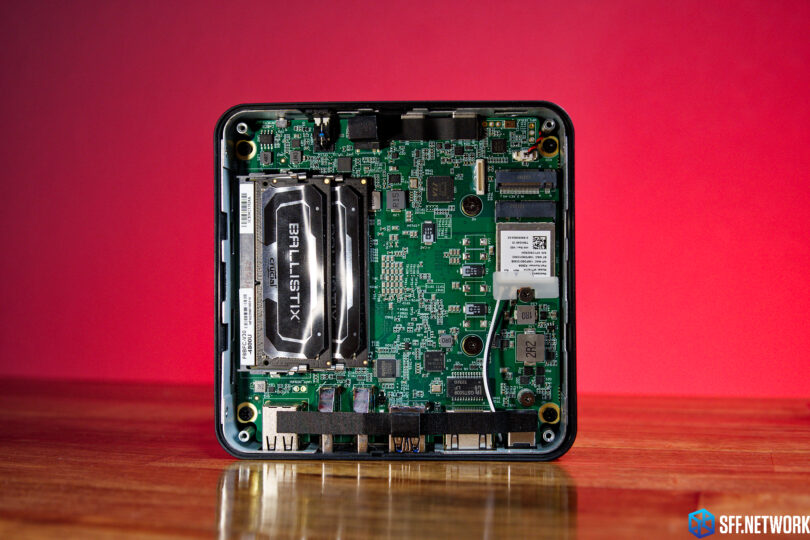
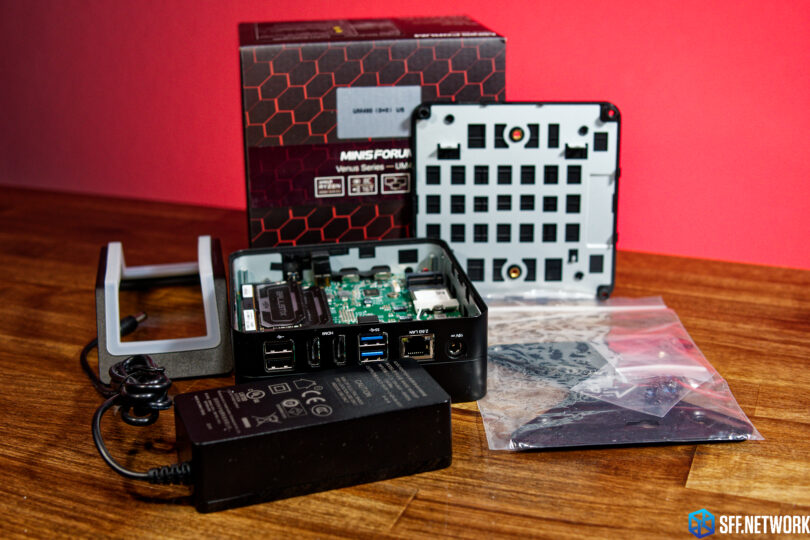
Once you do get inside it’s fairly easy to access everything and all the components are easy to find. Two RAM slots, WiFi card, and M.2 SSD can all be upgraded. There is also a single SATA connector near the M.2 slot that can use the provided cable to connect to a 2.5 inch drive.
BENCHMARKS


As with my HM90 review, I’m using the same 2 sticks of 8gb (each) Crucial Ballistix DDR4 3200mhz C16 RAM. I’ll compare results with the HM90 I tested earlier as well as the 4750G ITX build. I originally planned to test the UM480 at 10, 25, 35, and 45W – all of which are selectable in BIOS. However, the UM480 only comes with a 65W power brick, and if you saw my review of the HM90 you’ll note that the Ryzen 4000 series can pull significantly more than that at 35W and above. Unfortunately this is also the case on the UM480 and most tests at 35W TDP resulted in the system shutting down.
Cinebench R23
Geekbench 5 CPU
Geekbench 5 Compute
DxO PureRAW DeepPrime Export
DaVinci Resolve 18 Render
3D Mark
Unigine Superposition
As you can see in the results, performance wise the UM480 is inferior to the HM90 in every case. Only reducing the HM90 to a 10W TDP will result in the UM480 scoring a “win” and even then, it’s not always guaranteed. Interestingly, the UM480 does perform better at 10W than the HM90, most likely due to better binning on the 4800U versus the 4900H. In the HM90 review, I mentioned that most users would likely not notice a difference between an AM4 desktop APU and the mobile variant, but in the case of the UM480 the delta is becoming large enough in most tests that the performance is becoming noticeable.
POWER DRAW, TEMPS & FAN NOISE
While the HM90 sipped power at idle, consuming just 14W, the UM480 does even better at 12W. On the surface 2W isn’t a big difference, but that’s around a 15% drop. At max load the UM480 still does pretty well, taking in just 36W when the TDP is set to 10W, and only 60W at the default 25W TDP setting. This is quite a bit less than the HM90. When I set the TDP to 35W, the highest power draw I recorded before the system shut down was 75W, still far less than the HM90 at an equivalent TDP setting.
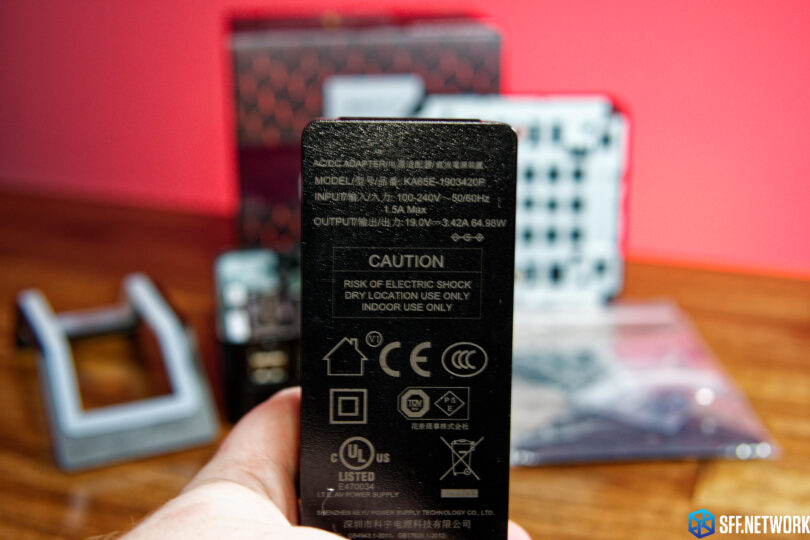
Since the UM480 is quite a bit smaller than the HM90, it should come as no surprise that while the power consumption might be less, the temperatures were not. The UM480 was several degrees warmer than the HM90 at the same TDP settings, and to my ears the fan noise was much more noticeable as the fan would often ramp up to keep the PC from thermal throttling. Fortunately it does not suffer from the as severe of SSD heating issues as the HM90, though a M.2 heatsink would still be recommended as it can be warm. Note that like the HM90, you may be limited in which heatsinks you can use.
Fan noise is always subjective, and while I did not hear the UM480 reach the highest fan speeds you can hear in the recording, I did find it louder than I would prefer and the noise was not particularly pleasant. If you are one who is not bothered by some fan noise, you most likely will find the UM480 to be satisfactory. If you have sensitive ears like mine, you will be disappointed. Take a listen below and compare with the HM90, but note that the HM90 rarely went above 60% fan speed while the UM480 quite often exceeded that.
CONCERNS
Two of my biggest complaints with the UM480 can be written off by the low price of the machine. The cheap feeling and sounding plastic and the weak power brick are disappointing but not surprising. My third complaint is harder to dismiss, which is that I don’t understand why Minisforum decided to put the screws under the rubber feet and make this inconvenient to disassemble. Could it be that they are wanting to sell less barebones models and are looking to reduce RMA’s due to novice users taking apart their pre-built machines? It’s hard to say but nonetheless I hope this trend does not continue.
CONCLUSION
The UM480 was not as impressive as the HM90. While it’s smaller, the chassis feels cheap as it creaks from the less premium plastics. Additionally the RAM speed limitation was a bummer, and while it’s nice they have the BIOS unlocked, it’s somewhat pointless given that you only get a 65W power brick. Fortunately it looks like the UM580 and 680 get more powerful bricks so they shouldn’t run into the same issues. Port selection is good however, and if you are using this for basic computing you’ll probably find that this is a plenty good computer when left at the stock settings.
VALUE COMPARISON

The UM480 is one of the cheapest Ryzen Mini PC’s you’ll find, coming in at $289 barebones. With 16gb of RAM and a 512gb SSD it’s only $399, making it as cheap as a barebones HM90. Beelink does have a 5500U powered SER5, or the 5600H SER6 – which undercuts the UM480 in price by $80 and $30 respectively, but the 5550U would be even less powerful considering it has only 6 Zen 2 cores. Clearly the UM480 was built to a budget, and it seems to have offered a good balance by offering good features, a slower version of a still competent CPU, but a price that is hard to beat.










